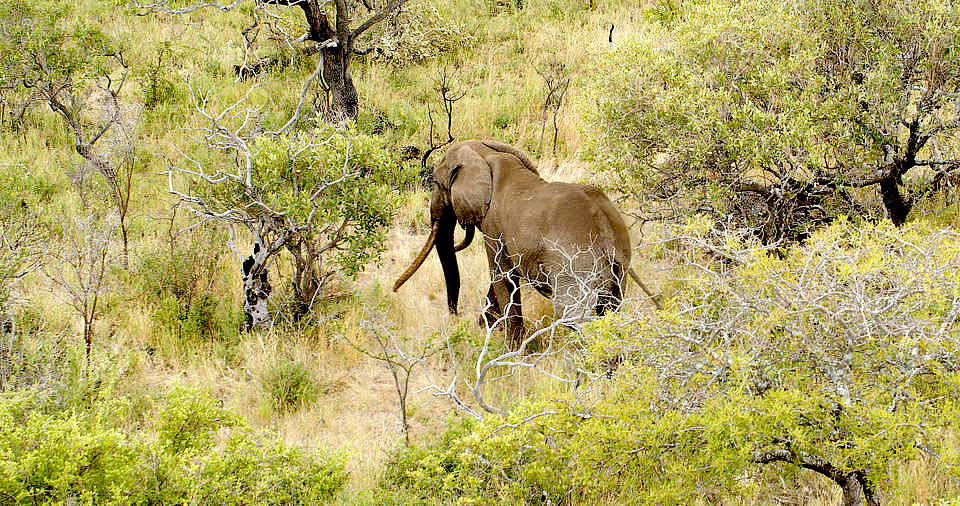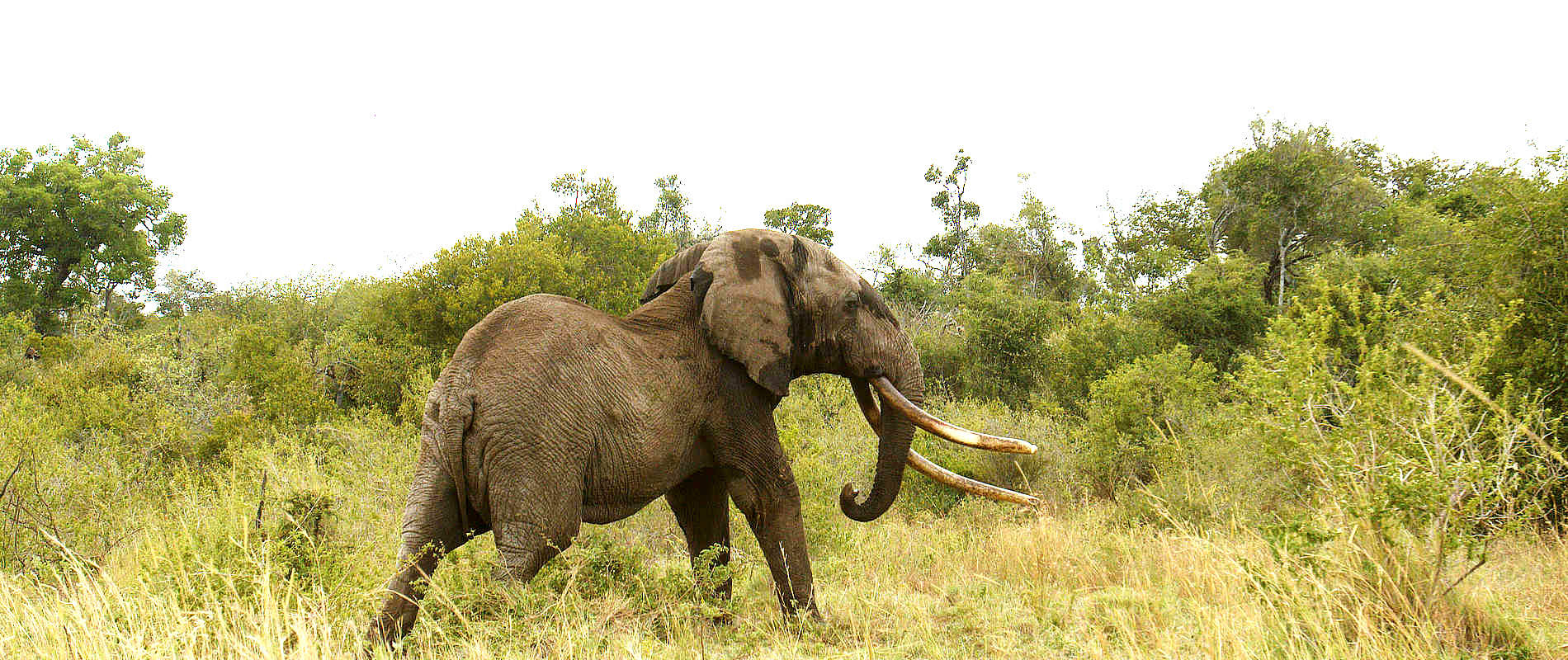The magnificent 'One Ton' has presided over the Chyulus for upwards of five decades. Tuskers of his magnificence are a rarity in today’s world. Not only is One Ton an ambassador for his species, but he is also a favourite of those working on the ground in the Chyulus and Amboseli ecosystem.
On the morning of Saturday 27th March, Big Life rangers were alarmed to see One Ton with a visibly infected wound to his neck. Upon receiving the call to help, we organised an urgent veterinary treatment.
The day was already shaping up to be a busy one for veterinary treatments, and Dr Kariuki, who leads our local SWT/KWS Amboseli Mobile Vet Unit, already had his hands full with two other cases. To avoid any delay, one of our fixed-wing pilots flew up to Nanyuki to collect Dr Mijele and the SWT/KWS Mount Kenya Mobile Vet Unit Team to assist with One Ton’s treatment. Ground and aerial teams then converged in the Chyulus, where the giant elephant was sheltering in an acacia forest.
Over the course of an hour, our helicopter pilot patiently and gently coaxed One Ton out of the dense forest and into open ground, where he could be darted for treatment. As often happens, when he succumbed to the anaesthetic he went down on the wrong side. Moving an elephant of One Ton’s size is no simple task, but something we have undertaken countless times before. Having been prepared for this eventuality, we secured straps around his enormous body and attached these to Big Life’s Land Cruiser, which was used to gently roll him over to access the wound.
Upon closer inspection, we discovered that the wound was even more serious than initially thought, penetrating at least a foot deep into his neck. The size and angle of the injury suggest that it was not inflicted by humans. Most likely, One Ton got into a skirmish with another elephant, which is not unusual among bulls of his size, or perhaps it was a natural mishap from a branch.
After thoroughly cleaning out the wound and administering antibiotics and anti-inflammatories, One Ton was revived and sent on his way. He was very lucky to be treated in time: This was a heavily infected injury, and left untended, it could have proved-life threatening. Big Life rangers will continue to monitor our friend of the Chyulus, and should he need follow-up treatment, we will be there.


The presence of tuskers is something we must never take for granted: The IUCN’s recent inclusion of the African savanna elephant on its Red List, deeming it an “endangered” species threatened with extinction, is a sobering reminder of that. We must ensure that elephants like One Ton do not become relics of the past. Our thanks to Big Life Foundation, Kenya Wildlife Service, and all involved in ensuring this magnificent fellow has a future.
